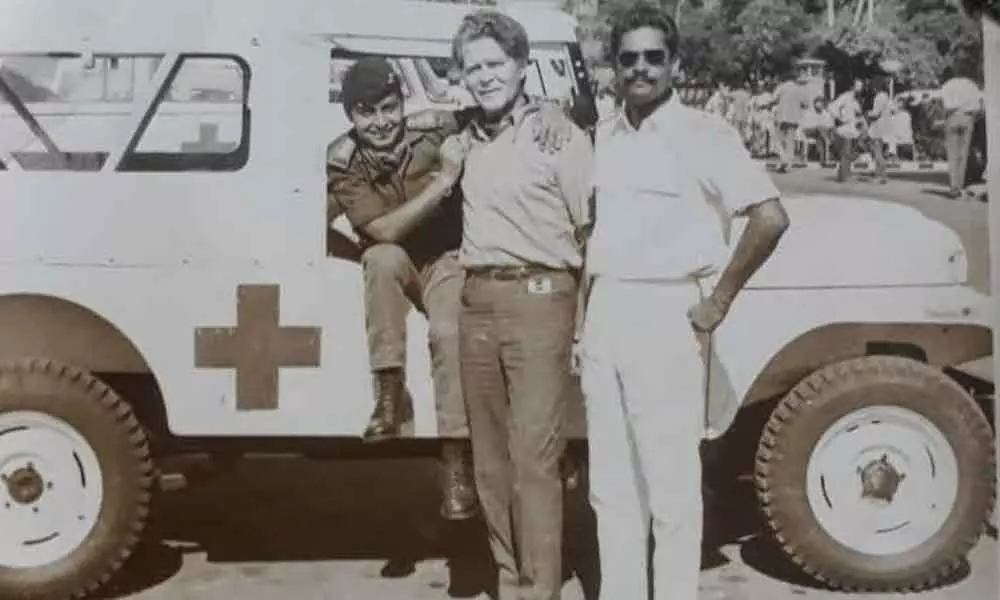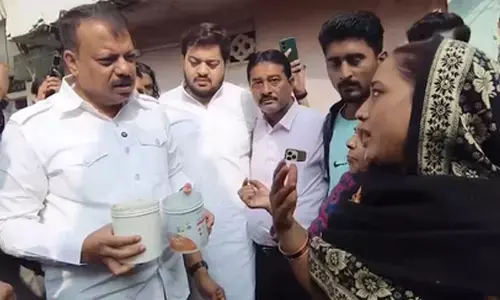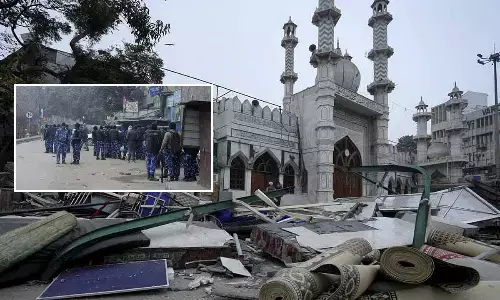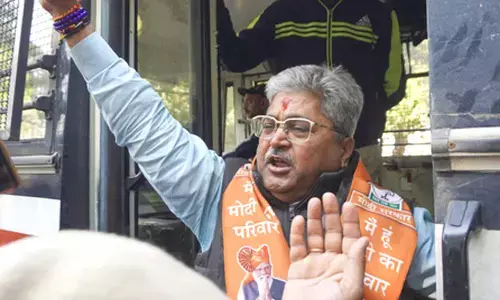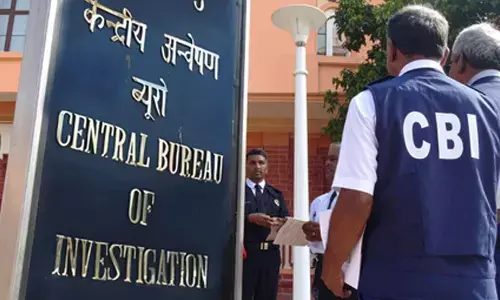71 war heroes remember operations that frustrated Pakistan attempts
Pakistan having failed to capture Poonch in 1947 and 1965 wars, had made this a prestige issue, and a third attempt to annex it was made in 1971
The Operation in the Western Sector
Pakistan having failed to capture Poonch in 1947 and 1965 wars, had made this a prestige issue, and a third attempt to annex it was made in 1971. One of the roads that leads to Poonch is from Mendhar through Krishna Ghati where a battalion was deployed. The intention was to capture Poonch and cut it off from the rest of J&K and thereby block reinforcements to the Indian forces.
Captain K. Sashidharan, a young Observation Post Officer, was given the task of providing Arty Support to the Company of 9 Raj Rif at Point 468.
He recalls, "Our Regiment 11 Field Regiment (Now 11 Medium Regt) was in support of 33 Infantry Brigade, a part of 39 Infantry Division and deployed initially in Samba Sector but later moved overnight to Poonch/Rajouri Sector perhaps due to its importance. Moving 25 Pounder Guns at night over a distance of 200 odd kms in mountainous terrain without headlights and no accidents was no mean task. The' Thambis' of 11 Field Regiment did an outstanding job in getting the guns, vehicles and ammunition safely to Krishna Ghati area by first light the next day."
On December 3, 1971 evening, Pakistan Air Force had carried out strafing missions on 11 of our airfields in the Western Sector.
Recounting the action in a bitterly cold winter, Capt. Sashidharan says, "At 8 pm Pakistan commenced shelling our position from their post across the LOC and overlooking our post. I got our guns to promptly respond, after about an hour Pakistan launched its first wave attack. More attacks were launched intermittently till 2 am next morning. All these attacks were repulsed by resorting to what was then called DF Red Red Red or SOS- basically means you call for fire onto your own position (when your position is almost being overrun) in order to deny it to the enemy. The enemy used the gaps between the various attacks to remove most of their dead under the cover of darkness. The enemy had however managed to get onto our Picket and was perched on one of our bunkers (small arms ammunition bunker) with a rocket launcher- the first rocket fired missed the Command Post we were in, before the second was fired we got the HMG gunner to fire a burst in the direction of the bunker- it was spot on and next morning we found the two of them dead (apart from several other smoldering bodies) with the launcher loaded !! The decision to call for this fire and the precision and accuracy of our gunners, saved the day. The Raj Rif Jawans under the Company Commander, then Maj Tomar put up a very spirited fight and held the battalion flag flying high. An eventful and unforgettable night that was."
Had the enemy attack been successful, they would have had a clear run up to the Brigade Headquarters at Surankot.
Capt Sashidharan states that the major challenge was the location/commanding position of the enemy post and the need to neutralize them before overrunning our post and giving them an opportunity to advance towards the Brigade Headquarters.
Subsequent Action.
He then proceeded to accompany a BSF Platoon on the right flank while 13 MAHAR accompanied by Capt. VPS Nair of 11 Field Regiment as Forward Observation Officer (FOO) on the left flank launched a counter attack and recaptured THAN PIR Post, in Poonch Sector.
Capt. Sashidharan was awarded a Mention in Dispatches.
The biggest Airdrop Operation since Independence in the Eastern Sector
The celebration of India's victory over Pakistan in the 1971 war is incomplete without the mention of Tangail Airdrop mounted on December 11 by the 2nd battalion of the Parachute Regiment. The main objective of the operation was the capture of Poongli bridge on the Jamuna river and cut off the approach of Pakistan's 53rd Brigade to Dhaka.
The Eastern Command of Indian Army recalled the operation in the Eastern Front where the 2 PARA (Airborne) battalions were airlifted from Dum Dum and Kalaikunda air bases and parachuted into East Pakistan.
Colonel T C Bharadwaj who participated in the war recounted that the mission assigned to 2 PARA Bn Group was to capture Poongli Br on the Mymensingh- Tangail- Dhaka Axis and link up with 95 Brigade (1 Maratha) advancing from the North.
"The Operation was launched from two locations -- Dum Dum and Kalai kunda airfield. The Pathfinder group and the heavy load (Jeeps, RCL guns, Arty guns, Rations etc) took off from Dum Dum Airport and was dropped on 11 Dec at 3:30 pm, while the rest of the Battalion took off from Kalaikunda and was dropped at 4:30 pm. Thereafter the task was to capture Poongli Bridge. All Subunits of the battalion were in position for the capture of Poongli br. by 6pm," he recalls.
The bridge was captured on December 11 at 6:30 pm, thereafter the battalion repulsed two counter attacks by the Pakistanis that night. The link up with 1 Maratha took place on December 12 at 4 pm. The Battalion was then asked to move on the Tangail- Mirpur Axis on December 15.
"Battalion captured Mirpur Br on December 16 at 6am and by 7 am we were informed that Pakistan had surrendered. Thereafter 2 PARA moved towards Dhaka and was the first Unit to enter Dhaka on December 16 at 9 am. The Surrender Ceremony was held in Dhaka on the same day at 4pm," he says.
The paratroopers were airdropped when the daylight was fading. Col Bharadwaj states the operation was challenging and the biggest Battalion Group airdrop so far after Independence
"The operation cannot be forgotten because it was the biggest air drop operation since Independence and my role as Commander Path finder was crucial for the success of the entire operation and my role as the Combat Team Commander," he recalls.
Col Bharadwaj visited Bangladesh last year and the action of the Indian Armed Forces was greatly appreciated and acknowledged.
"They had assigned one corner in their National Museum which was dedicated to the services rendered by the Joint Command of Indian and Liberation Forces, which was largely responsible for changing the course of the war," he says.
Captain K. Sashidharan (middle) in the front row



